Ralph Ellison’s papers in the Library of Congress include hundreds of photographs that the novelist took over many years, mostly as a serious amateur and also, for a brief period in the late 1940s, as an aspiring professional. They range from the striking black-and-white studies of street life in Harlem that he made when he was in his thirties to elegant Polaroid images of flowers and still lifes from his later years. They aren’t great photographs. But they fascinate nonetheless, as the record of a modern literary giant’s romance with a quintessentially modern visual medium. Now there’s a beautifully produced book, Ralph Ellison: Photographer, which for the first time makes a generous selection of this work easily available.
Both too much and too little can be made of what Ellison apparently regarded as an avocation. In the critical and scholarly studies that his photographs have already inspired, the differing qualities and characteristics of his literary texts and photographic images sometimes blur together in ways I find troubling. Nevertheless, there is no denying that what might be thought of as a photographic way of seeing was an aspect of Ellison’s imagination. My guess is that he was attracted by the paradoxical nature of photography, which is empirical but by no means impersonal. The considerable number of observations about the camera arts to be found in his writing—they’re more often about movies and moviemaking than photography—suggests not a theory but a play of ideas. Scholars have tried to nail down his views. It’s not easy to do. Ellison’s intellectual temperament was too fluid and improvisational to allow for any definitive statement about the relationship between literature and photography—or for that matter between literature and any other art. As I’ve moved back and forth between Ellison’s photographs and the ruminations about the camera arts found in his writing, I’ve been struck by the extent to which he recognized in photographs and movies a hyperbolic reality that paralleled his own over-the-top imagination. His vision is as unruly as it is refined.
The new collection of Ellison’s photographs includes an excerpt from what is perhaps his greatest essay, “The Little Man in Chehaw Station: The American Artist and His Audience” (1978), with its expansive vision of the creation and appreciation of the arts in a democratic society. What amounts to a literary vignette appears in this book because its subject is a photographer, but I don’t know that it’s really about photography. Ellison describes seeing, on Riverside Drive not far from where he lived, an “elegant gentleman” getting out of a blue Volkswagen Beetle with “an expensive Japanese single-lens reflex camera” and proceeding to take a series of self-portraits with “sharp movie director’s commands as to desired poses.” The man is an enigma, a “light-skinned…Afro-American featured individual” who might be taken for Egyptian or Anglo-Saxon, dressed as if for a hunt on an English estate, with the boots, breeches, and leather crop of an equestrian, but also wearing a “dashy dashiki.” What fascinates Ellison isn’t so much the camera as the mélange of styles and sources: the German car, the Japanese camera, the English and African clothes. What he is driving at is the synthetic, inventive nature of American experience, in which “the mixture, the improvised form, the willful juxtaposition of modes” adds up to the mysterious man’s “freewheeling assault upon traditional forms of the Western aesthetic.” Photographers and moviemakers can mirror—and at times maybe even help to shape—heterodox American experience.
As a young man determined to know everything he could about new developments in culture and politics, Ellison was naturally drawn to photography, a visual medium in which art, reportage, social commentary, and something closer to agitprop can be mixed up in unexpected ways. Sara Blair, in Harlem Crossroads: Black Writers and the Photograph in the Twentieth Century (2007), situates Ellison amid the feverish photographic activity of the 1930s and 1940s. He was deeply impressed by Twelve Million Black Voices: A Folk History of the Negro in the United States (1941), a volume that brought new attention to African American history, with text by Richard Wright, a writer Ellison was close to at the time, and images selected by the photographer Edwin Rosskam. “I am sure now more than ever,” Ellison wrote to Wright after studying the book, “that you and I are brothers.” Later in the 1940s Ellison joined forces with a good friend, the photographer Gordon Parks, to bring his words and Parks’s images together for a report about a new psychiatric clinic in Harlem; commissioned for a publication called The Magazine of the Year, the project fell apart when the magazine went bankrupt. Parks, on the cusp of a major career as a photojournalist at Life magazine, gave Ellison advice as he aimed to establish himself as a portrait photographer even as he was struggling with Invisible Man (1952), the novel that brought him fame and remained the only extended work of fiction he published during his lifetime. Ellison had stationery printed and got some assignments; he received a commission to photograph Mary McCarthy when her novel The Oasis was published in 1949.
New York, where Ellison, who had grown up in Oklahoma, first arrived in 1936, was an extraordinarily rich subject for photographers. The urban spectacle could be cruel and chaotic, an indictment of capitalism when the person behind the camera was one of the left-wing photographers associated with the Photo League. For others, especially Helen Levitt, who brought a sly lyricism to her studies of children at play, the city streets were a beguiling, gritty pastoral. Ellison’s own photographs of men, women, and children on Harlem sidewalks and streets were produced with the relatively light, easy-to-use cameras that at the time were opening up new pictorial possibilities. He seems to have approached photography as both message and metaphor, obvious and allusive; New York was thrilling despite all the struggle and strife. In the 1940s he trained his camera not only on encounters between police and civilians but also on his beautiful wife, Fanny, literary friends, depopulated snowy streets, and a Corinthian column in a demolition site. In one group of photographs he regarded the equipment in a dentist’s office as if it were a Cubist still life or a machine age abstraction painted by Fernand Léger.
Ellison’s photographs, when considered along with the scattered but significant allusions to photography and moviemaking found in his fiction and nonfiction, raise enduring questions about reality, photography, and the art of the novel. Both photographers and fiction writers find at least some of their raw material in the world around them; they make stories out of what they see. Some sense that photography and the novel might be mutually supportive—at times even synergistic—has been around for more than a hundred years.
In the late nineteenth century visitors to Italy could buy editions of George Eliot’s Romola and Nathaniel Hawthorne’s The Marble Faun illustrated with contemporary photographs of the Roman and Florentine landmarks that had in part inspired these novels; the images reinforced the reader’s sense of the story. André Breton’s Nadja (1928), the romantic account of the Surrealist poet’s affair with a mysterious woman, was illustrated with rather banal photographs of some of the Parisian sites in the book; they gave the incredible adventure a certain journalistic credibility. More recently there has been a good deal of discussion about W.G. Sebald’s use of photographs as accompaniments to his fictions, including The Rings of Saturn (1995) and Austerlitz (2001). The process has also worked in reverse, with photographers seeing analogies between their own enterprise and the work of writers. Walker Evans said that as a photographer he had been influenced by Flaubert and Baudelaire: “Flaubert’s aesthetic is absolutely mine,” he told an interviewer. In a posthumously published book entitled Proust in the Power of Photography (1997), the Hungarian photographer Brassaï argued for “the interpenetration of the world of photography and Proust’s world.”
Although Ellison never devoted an essay or other sustained piece of prose to the camera arts, he surely thought about the relationship among photography, film, and fiction. What’s especially fascinating about his aesthetic views is that while they’re bold and impassioned, they’re never entirely fixed. That can be a problem for critics and scholars who want to pin him down. In “The Shadow and the Act,” a discussion of representations of Blacks in Hollywood first published in The Reporter in 1949, Ellison observes that
usually The Birth of a Nation is discussed in terms of its contributions to cinema technique, but as with every other technical advance since the oceanic sailing ship, it became a further instrument in the dehumanization of the Negro.
This is a warning against the dangers of Hollywood, especially when Ellison goes on to say that D.W. Griffith “captured the enormous mythmaking potential of the film form almost from the beginning.” And yet in the introduction to Shadow and Act (1964), the collection in which he included the essay, Ellison regards “the intense spell of the early movies” as something wonderful. When he was a child, he explains, movies made it possible for him and his friends to recreate “folk figures, legendary heroes, monsters even, most of which violated all ideas of social hierarchy and order.” Together they “processed reality and dream, natural man and traditional hero, literature and folklore, like maniacal editors turned loose in some frantic film-cutting room.” Perhaps what Ellison is driving at is that photography and film can be many different things—tyrannical or liberating, whatever one wills or imagines them to be.
I believe that Ellison saw some element of alchemy in the camera arts: to invoke a photograph or a film was to suggest transformations and metamorphoses, to summon up past, present, and future as slippery possibilities, truth and lie inextricably bound together. Especially in the vast novel that he left unfinished at his death in 1994—a part was published as Juneteenth in 1999 and the entirety a decade later as Three Days Before the Shooting…—the photographic and cinematic arts generate a range of plot twists, allusions, and analogies so richly contradictory that commentators must be on their guard against drawing any definitive conclusions. The first chapter of Three Days Before the Shooting…opens with a description of a photograph of an elegant sports car catching fire at the Le Mans Grand Prix. At this point the novel is narrated by a newspaperman, Welborn McIntyre, who’s describing his shock as he sits in the press section of the United States Senate and witnesses the assassination of Senator Adam Sunraider, who is giving a speech. McIntyre, in characterizing the photograph of the burning sports car as an “awe-inspiring sabre of flame and destruction,” is using the image metaphorically, to dramatize his state of mind. A few sentences later he observes that in the ensuing minutes “things seemed to reel out of phase,” as if the best way to describe unfolding chaos were as a film screening gone awry.
Senator Sunraider, one of the two central figures in Ellison’s novel, has a tangled past. He’s brought up in a Black community by Reverend Hickman, the story’s protagonist. Sunraider is biracial but easily able to pass for white. Eventually he becomes a racist who represents a northern state in the Senate and is shot as Reverend Hickman watches in horror, along with McIntyre and many others. But for a time earlier in his career Sunraider is part of a ragtag film crew that’s taking advantage of the goodwill (and movie fever) of a group of Oklahoma City residents, mostly Black and Native American. A local girl whom he romances and gets pregnant refers to him as Mister Movie-man. He’s a huckster, a charlatan. The movie camera that he and his partners maneuver is described as “that one-eyed, three-legged contraption” and “the cyclops.”
In a note written as he was working on the novel, Ellison refers to Mister Movie-man’s involvement with the camera as a way of “forgetting, then of denying, and then of distorting, burlesquing.” And yet when the locals who’ve appeared in the film Sunraider is making see some of the unedited footage, “it was as though seeing themselves ballooned on the screen finally convinced them they were really living in a new state, in a real town, and amongst other real people.” I wonder if Ellison’s experience photographing Harlem in the 1940s—and perhaps speculating as to what his subjects thought about being photographed—helped shape this meditation on the paradoxical capacity of the camera to heighten a person’s sense of reality even as it distorts reality. Elsewhere in Three Days Before the Shooting… Ellison describes a movie as “a flickering semblance of life” and a movie screen as “conspiratorial.”
Ellison aspired to the exacting imaginative freedom that he knew from the jazz musicians he admired; as an artist you could do whatever you wanted, but you had to do it superbly. In “The Little Man in Chehaw Station” he recalled Hazel Harrison, his music teacher at the Tuskegee Institute, telling him that an artist had to know “the tradition” and “the standards” that shaped an art form. Ellison, whose interest in cameras was at least in part fueled by his fascination with new technologies, needed to learn everything he could about the art of photography. In Harlem Crossroads, Blair suggests that he consciously aimed, in his studies of children at play and men and women in groups or alone, for the incisive yet informal compositions that we associate with the great photographers of the period. Among them were Weegee, whose lurid work for the tabloids found an appreciative audience among artists and intellectuals, and others more closely associated with the high art traditions, especially Lisette Model, Walker Evans, and Henri Cartier-Bresson. Writing for the catalog of Cartier-Bresson’s show at the Museum of Modern Art in 1947, Lincoln Kirstein celebrated the use of “a seductive and ambiguous instrument” to reveal a “symbolic fragment.” It seems that Ellison had met Cartier-Bresson in the 1940s and also knew Evans, although how well isn’t clear. Among Ellison’s papers in the Library of Congress there are collections of clippings related to the work of the photographers he admired; Blair believes he saw Cartier-Bresson’s retrospective at the museum.
Cartier-Bresson, Evans, and Model, on the street with camera at the ready, thrust the modern imagination into perpetual motion. Ellison may have seen in their work some of the same experimental daring that he admired in James Joyce’s sentences and Charlie Parker’s sounds. These photographers approached everyday experience with extraordinary expectations; they took it for granted that reality had been destabilized by the Cubist revolution, which by the 1930s was already a generation old. They looked through the camera lens expecting, or at least hoping, to discover something supercharged—allegorical. “Photography,” Cartier-Bresson wrote in 1952 in the introduction to his landmark collection The Decisive Moment, “implies the recognition of a rhythm in the world of real things.” By recognizing—and emphasizing—that rhythm, photographers revealed deep, unexpected aspects of experience. The inclination to see appearances in heightened and even surreal terms was something that certainly interested Ellison as he worked on Invisible Man, a novel in which the contours of Black life in America are sharpened, magnified, even monumentalized.
Blair pays particular attention to the scenes of rioting and mayhem that dominate the closing pages of Invisible Man. She relates the moment when Ellison’s protagonist sees a “body hung, white, naked, and horribly feminine from a lamppost” to the fascination with mannequins and shop windows found in the work of photographers ranging from Eugène Atget in early twentieth-century Paris to Lisette Model in 1940s New York. In the novel, Ellison’s Invisible Man experiences a growing horror as what initially had seemed one body becomes “another and another, seven—all hanging before a gutted storefront.” Only then does he realize “they were mannequins—‘Dummies!’” It’s a moment of pure Surrealism. And Blair is certainly justified in wondering whether Ellison could have imagined it without knowing certain images, not only the photographs of Atget and Model but also perhaps the mannequins or mannequin-like figures in the work of Giorgio de Chirico and other painters. Blair makes her case elegantly, not only with photographs by Model but also a news photograph of mannequins taken during the 1943 riots in Harlem that Ellison had in his mind as he worked on the novel. I’m just not sure how much all this tells us about the nature of Ellison’s literary imagination.
Blair argues that “Invisible Man becomes at its climax a photo-text without photographs, a text both indebted to and exceeding the cultural genres shaping the era of its emergence.” I see her point. But after reading Blair and rereading Invisible Man, I felt that whatever interest Ellison had in the fixity of the photographic image was banished by the dramatic verbal play of the novel’s final pages. Here words summon images with propulsive force. It’s our hunger for Ellison’s language that carries us along while the Invisible Man, who has watched with horror as the tenants of a run-down apartment building burn their own homes, soon after finds himself confronted by the white bodies that turn out to be dummies. When Ellison writes “‘Dummies!’—I said aloud,” the quotation marks, the exclamation point, the dash, and the “I” give the experience a power that’s verbal—literary—before it’s visual. The Invisible Man, Ellison writes, hoped for the “relief of laughter” but instead “suddenly was more devastated by the humor than by the horror.” The beauty of that construction is in the rhyming of “humor” and “horror.” “But are they unreal,” Ellison continues, “are they? What if one, even one is real—is…Sybil?,” a white woman with whom the Invisible Man had been intimate only hours earlier. The writing in these passages is anything but photographic. Everything depends on the ordering of the words, the limpidity of the prose.
I expect that for Ellison photography functioned much as it did for another great writer of his generation, Eudora Welty; the two were friends. In the 1980s, when Welty was interviewed about the photographs of poor southerners that she’d taken decades earlier, she gently rejected too close a connection between word and image. She speculated that “perhaps a kindred impulse made me attempt two unrelated things—an inquiring nature.”1 When asked if a description of Mardi Gras in her novel The Optimist’s Daughter (1972) could have been “subconsciously a reflection” of photographs of the event that she’d taken, she demurred, saying that although she might have ultimately looked to the photographs for specific details, what she wrote came “directly from life.” For Welty photography was a way of feeling herself into the world that only indirectly, as part of some larger range of experiences, prepared her for the essential act of writing. She must have believed that many possibilities had to be rejected as an artist distilled and purified unruly experience; certainly Ellison believed that. The novelist Reynolds Price, reflecting on Welty’s photographs and fiction, said something that also applies to Ellison: her photographs suggest “a sister-planet to the long verbal dream or a bedrock stratum from which that long dream rises like breath.”
Rather than conceiving of writing and photographing as closely linked activities, we might regard them as radically different paths that involve or express related impulses. If there is no photograph by Ellison that can even begin to approach the feverish power of his prose, there certainly are images among the work of photographers he admired that suggest parallels. This is especially true of some of the photographs in the opening pages of Cartier-Bresson’s The Decisive Moment: the bespectacled bride laughing with her husband as she stands on a swing; the two heavyset couples picnicking on the banks of the Marne; the blurred figure leaping across the wet ground of the Place de l’Europe in Paris; a dozen young boys gleefully roughhousing amid ruined buildings in Madrid; Easter in New York City, with a beautiful young Black woman in her elegant flowery hat eyed by an equally elegant young man. What links Cartier-Bresson’s photographs and Ellison’s prose is a quality of concentration and control that italicizes and exalts the strange beauty of life’s particulars—even life’s oddest, most bizarre and disturbing particulars. Something that Ellison wrote about a great friend, the artist Romare Bearden, may be relevant: “There is no preaching; these forces have been brought to eye by formal art.”
Ellison doesn’t seem to have had much to say about his own photographs. Nor did he, so far as I understand, ever make a definitive or even a provisional selection from them. So it’s left to critics and scholars to offer their own selections and decide what matters more and what less. Ralph Ellison: Photographer contains only a couple of images of Italy, although from Arnold Rampersad’s biography I gather that he photographed a good deal during the couple of years he spent at the American Academy in Rome.2 Does this mean that the Italian photographs—I assume they’re among the material in the Library of Congress—are less important than the photographs of Harlem that dominate the first half of the new collection? Of course Ellison’s camera studies of Harlem will be of interest to anybody who cares about Invisible Man. But what are we to make of the many hundreds of Polaroids that Ellison took in later years, often of his apartment and sometimes of the view out a window onto Riverside Drive? They dominate the second half of the book. The Polaroids include a great many close-ups of the orchids and other flowers that Ellison apparently cultivated, as well as studies of the apartment’s elegant modern furnishings, walls of books, shelf of Native American kachina dolls, and elaborate stereo equipment.
Michael Germana, in Ralph Ellison, Temporal Technologist (2018), is excited by these Polaroids; he relates them to a fascination with inanimate objects that you find throughout Ellison’s fiction. He reminds us of the description in Invisible Man of the collection of things that pile up on a Harlem street as an old couple are evicted from their apartment. That heap of stuff—pots, plants, a comb, “a curling iron, a card with silvery letters against a background of dark red velvet, reading ‘God Bless Our Home’”—drives the story forward, for it’s the Invisible Man’s voluble response to the eviction that rallies the crowd outside the apartment and precipitates his brief, exciting career as a public speaker. Turning from Invisible Man to Three Days Before the Shooting…, which Ellison was working on in the years when he was using a Polaroid camera, Germana points to the extended description of a big house in Washington, D.C., belonging to an antique dealer, Jessie Rockmore, whose rooms are packed with a chaotic assemblage of antiques, a sort of “ragtag museum.” Looking at the walls lined with old lithographs and “fading photographs,” Welborn McIntyre, the journalist who narrates a long section of the novel, finds that each image summons up a story, the inanimate object animated by its own history. While some of Germana’s theoretical speculations strike me as overly elaborate, I think he’s spot on when he suggests that Ellison’s way of lingering over objects in his fiction has some parallel in the retrospective quality of the Polaroids, in which a moment in time is both frozen and expanded. Germana speaks of “the multiplicity of temporalities inherent in duration.”
There’s also something dandyish about Ellison’s Polaroids, something of the free-floating curiosity of the flaneur or aesthete. When Ellison photographs his orchids he might almost be Des Esseintes, the hero of Joris-Karl Huysman’s ode to decadence, À Rebours (1884). Could it be that some of Ellison’s admirers find it difficult to reconcile his aestheticism with the determined and even relentless seriousness of his observations and critiques of American society? If this is a conundrum, it’s one that’s certainly knit into the nature of the work that photographers do, for even the most dour documentarian aestheticizes experience, turning a disturbing event into a legible composition. Ellison’s photographs can’t be understood without confronting this aestheticizing impulse; it’s true even of his studies of rough times on Harlem streets, with their element of social critique. The search for beauty was always on Ellison’s mind when he picked up his camera. A single photograph in Ralph Ellison: Photographer, taken during a visit to Japan, suggests his infatuation with what he referred to in a letter to his wife as the country’s “unique beauty.” Ellison loved the way the Japanese wrapped packages and how “they bind up the wounds of an injured tree.”
A certain narcissism—an intimate, diaristic, self-regarding quality—is part of the mystique of the Polaroid photograph. You find it in Polaroids taken by a number of important photographers, among them Evans, Manuel Álvarez Bravo, and André Kertész.3 I wonder if Ellison was aware that Evans was fascinated by this quick and easy new technology. I would be surprised if Ellison, so attuned to what was happening in photography in the 1940s, wasn’t still up to date thirty years later. Certainly there are connections between what interested Evans about the Polaroid camera and some of Ellison’s enduring concerns. Jerry Thompson, in a memoir of Evans’s later years, observes that he was interested in “incidental detritus,” in “things carelessly dropped or deliberately discarded. Photographing these humble cast-offs is the exact opposite of photographing the official ornaments of dominant culture.”4 That brings us back to Ellison’s fascination with the old couple’s possessions dumped on the street in Invisible Man and Jessie Rockmore’s chaotic Washington home full of antiques in Three Days Before the Shooting…. Evans said of the Polaroid camera that “it reduces everything to your brains and taste.” That might double as a description of what Ellison had in mind when he worked with it.
The runaway success of Invisible Man when it was published in the early 1950s left the literary world assuming that Ellison would go on to satisfy a growing American audience for serious fiction with a string of novels, much as his good friend Saul Bellow was determined to do. But that wasn’t what happened. As the decades rolled by Ellison seemed to be more interested in a spirit of perpetual experimentation than in the market that Bellow, Roth, Updike, and others fueled. For Ellison there was always the open-ended search for perfection, like the jazz musician improvising late into the night—or the photographer on the street never knowing what might come next. Reading Three Days Before the Shooting…, brilliantly edited by John F. Callahan and Adam Bradley, I found myself thinking of another unfinished masterpiece, Ezra Pound’s Cantos. A figure based on Pound—a poet, “an old fellow who’s hung up on things like the gold standard, birth control and foreign policy and Chinese cooking”—appears in the novel, as a patient in the hospital where Senator Sunraider is dying. Though Ellison wasn’t among the writers who believed that Pound should be released from St. Elizabeths Hospital, where he’d been interned as mentally ill rather than being tried for treason after World War II, the juxtaposition of different modes and moods in Ellison’s unfinished novel sometimes recalls the disjunctures in the Cantos. We’re left wondering if modern experience can ever fit into any single pattern.
Woven into Three Days Before the Shooting… is what amounts to a warning about the simplifications that can seduce the photographer—or for that matter, any artist—when confronted with the onslaught of experience. A high school boy, visiting the Lincoln Memorial in Washington, photographs a group of Black people, an old man surrounded by old women. Asked why, his response is that “he had seen them as a ‘good composition…. I thought their faces would make a good scale of grays between the whiteness of the marble and the blackness of the shadows.’” The group that he photographs is none other than Reverend Hickman and the women in his parish, who’ve come to Washington to warn Senator Sunraider that there is a threat to his life and, having failed to gain access to him, have spent some of the rest of their day “faded into those same peaceful shadows.”
Only later do we see the visit to the memorial through Reverend Hickman’s eyes. It turns out that there was nothing shadowy about their time there. Ellison describes the old Black minister’s experience in long, lapidary sentences:
Once again he was moving, moving into the cool, shaded and sonorous calm of the edifice, moving slowly and dream-like over the fluted shadows cast along the stony floor before him by the upward-reaching columns, and he advanced toward the great image slumped in the huge stone chair.
Ellison takes us higher and higher:
Staring upward into the great brooding eyes [Hickman] felt a strong impulse to turn and seek to share their distant vision but was held, the eyes holding him quiet and still, and he stared upward, seeking their secret, their mysterious life, in the stone.
Arriving at Ellison’s thunderous account of Hickman’s encounter with the monumental statue of Lincoln, a reader can’t but regard it as a devastating critique of what the high school student has seen with his camera. That’s a composition—merely a composition. I don’t doubt that Ellison is suggesting—or at least wondering about—the superior power of the literary arts when it comes to capturing a person’s state of mind. He’s also reminding us that whatever art form is involved, it’s a mistake to imagine that a “good composition” is what an artist is after. What Ellison is after—what the greatest photographers are also after—is a composition that explodes all known ideas of composition.
Ellison’s is an art of excess and ecstasy. Measured against the racing narratives, wild juxtapositions, and ardent soliloquies to be found in the unfinished Three Days Before the Shooting…, even Invisible Man, a bildungsroman covering some twenty years, can seem too good a composition. For Ellison photography may have been a way of sketching, ruminating, fooling around, working off steam, procrastinating before confronting the main event, which was composing an American story that kept decomposing. If he couldn’t complete the composition, nobody could.


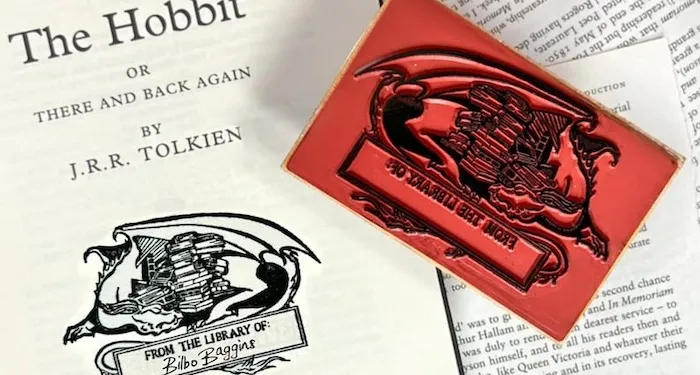

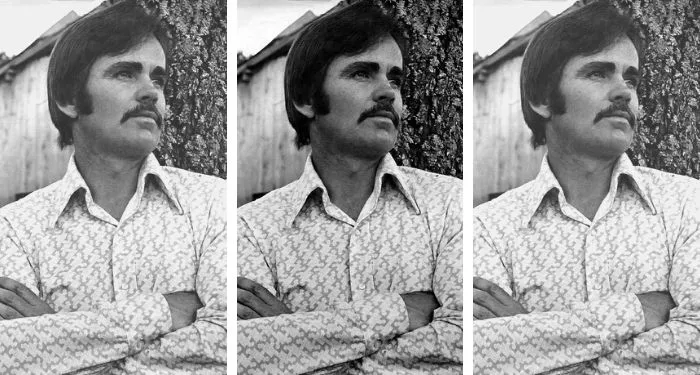


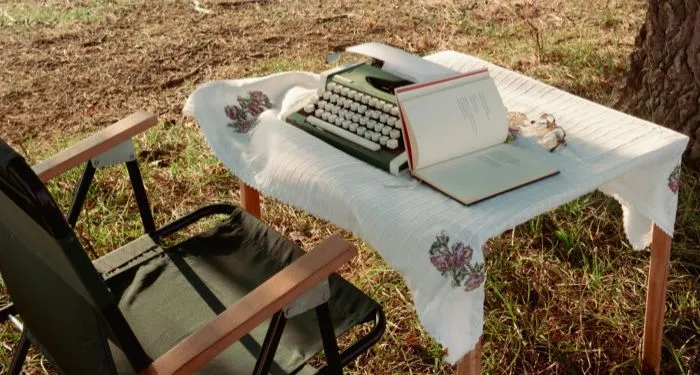
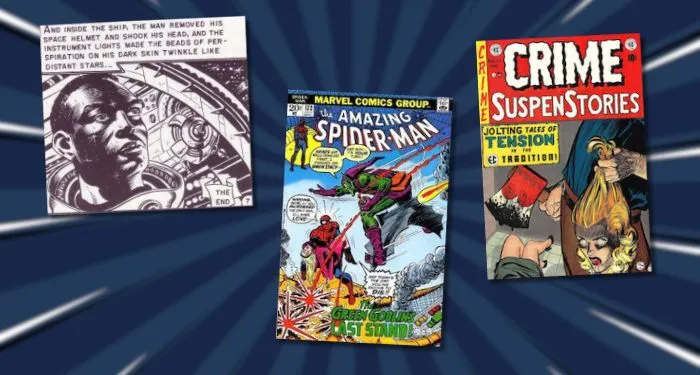
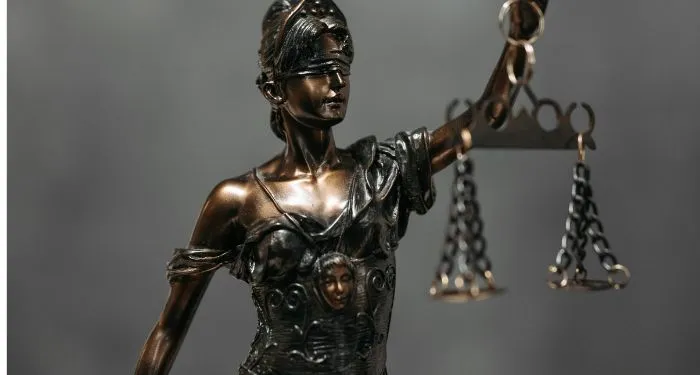
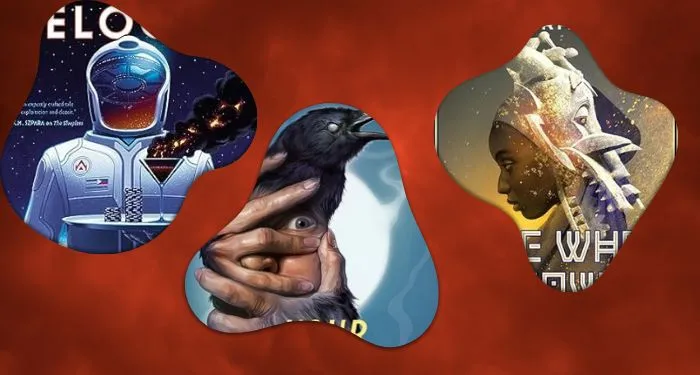






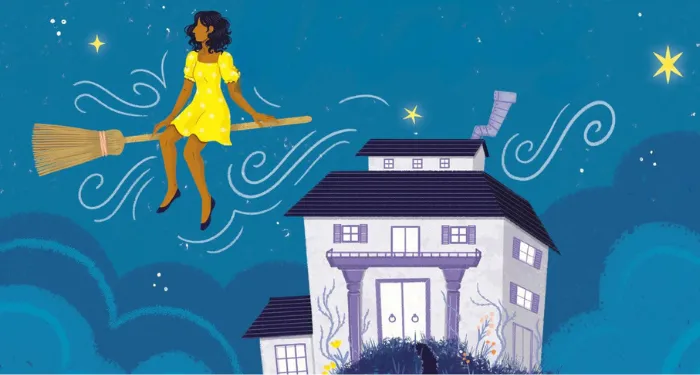


 English (US) ·
English (US) ·